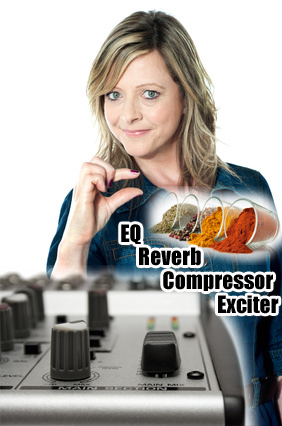 When mixing a multi-track project, there comes a time when you’re “done” and ready to mix it down (often called “rendering” these days). For a review on what it means to mix something down, see our post here: What Does It Mean To Mix Down Audio? Anyway, you may have a song that is 20, 30, or even 40 tracks or more. During mix-down, the outputs of all of those tracks go into the master track, which then puts out the final stereo signal (usually an audio file like a wav).
When mixing a multi-track project, there comes a time when you’re “done” and ready to mix it down (often called “rendering” these days). For a review on what it means to mix something down, see our post here: What Does It Mean To Mix Down Audio? Anyway, you may have a song that is 20, 30, or even 40 tracks or more. During mix-down, the outputs of all of those tracks go into the master track, which then puts out the final stereo signal (usually an audio file like a wav).
Well this final “master” track, sometimes called the master buss, can have effects applied to it just like the individual tracks, except that any effect applied to the master track will affect everything – every track. For that reason, it is advisable to use any effect at that stage VERY sparingly. The only things I ever do to a master track are adjust the peak volume either by using the master fader control, or by applying a limiter effect to prevent any clipping or distortion in the final mix. Personally I never put any EQ or exciters, or any other tone-altering effect on the master track. I prefer to create a final mix with only the individual track effects applied. Then during the “mastering” stage (see our post What Does Mastering a Song Mean?), I’ll add whatever effects I think will improve the final audio (using audio editing software like Adobe Audition, which has excellent mastering tools. Another good choice is Sound Forge). If it doesn’t sound right, I can always undo the effect at that stage and try something different. But that is hard to do when you’ve already applied the effect to the file during the mix-down process.
Here is an article by Graham Cochrane about this whole idea: http://therecordingrevolution.com/2012/10/29/go-easy-on-the-mix-buss/
Leave a Reply